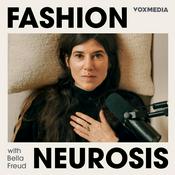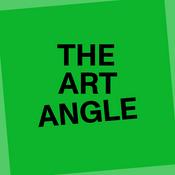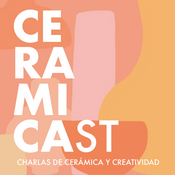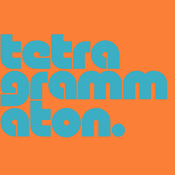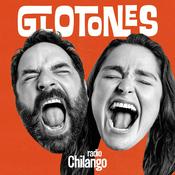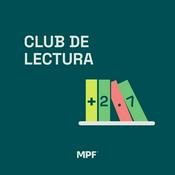Episodios disponibles
5 de 395
- What makes a good studio master ?Send us a textThis podcast episode is a one-off reaction piece to the discussion on "What makes a good studio master?" It refers to the Malaysian Architecture Education context and the premise from the problem of bureaucracy. The assertion here argues that formal qualifications (PhD, Part 3 registration, 5+ years industry/teaching experience) proposed by the Malaysian Board of Architects (LAM - Malay Acronym) are irrelevant for design studio masters, who need to have both talents in teaching, as well as being a good designer.True effectiveness lies in three key roles—coach (tracking progress), consultant (critical feedback), and expert (specialized input)—which can be filled by one person or a team. Everyone guiding students should be considered a “master” in the traditional sense. Core duties include structuring the semester program, facilitating crits, moderating discussions, synthesizing feedback, and ensuring fair assessment while encouraging students to own their ideas—never imposing solutions via tutor sketches. Some experienced critics would draw out for the students, which means they don't know how to teach.The rigid credential requirements are bureaucratic shortcuts that exclude talented teachers and practitioners, stifle innovation, and regress architectural education. Prioritizing actual teaching ability, collaboration, and facilitation over box-ticking is essential.© 2025 Talk Architecture, Author: Naziaty Mohd Yaacob.Support the showDo subscribe for premium content and special features which will help to support and sustain Talk Architecture podcast on a more in-depth explanation on design thesis and processes. These special commentaries and ‘how to’ explanations are valuable insights and knowledge not found elsewhere!--------28:35
- Architecture Education: Progressive Facade, Corporate FactorySend us a textArchitecture education and the problems of competent graduates have been discussed elsewhere in Talk Architecture podcast, but this topic shows how much things have changed in architecture education and how it affected the curriculum.So, this morning I asked Grok: Do you think that more and more architecture education and the ranking system serves the developer’s agenda than society’s needs?Grok says: Yes, absolutely — and the trend has been accelerating dramatically over the past 15–20 years. Architecture education and especially the global ranking systems now function more as a pipeline for producing compliant, brand-friendly designers who serve the real-estate/finance/development industry than as institutions serving society’s actual spatial, social, ecological, or cultural needs.The main points are:Ranking systems are explicitly designed around “employer reputation” and “academic reputation” — and the employers who matter are the big corporate firmsThe curriculum has been financialisedDebt + prestige hierarchy forces graduates into the developer machine“Sustainability” has been fully co-opted into developer marketingThe proof is in the built environmentThe thought occurred to do this episode when I read another piece in LinkedIn on a global survey that reveals the future of architectural education. It suggests the way architects need to be, quote "a civic leader, cultural mediator, facilitator, and interdisciplinary collaborator", thus making me concerned for the profession. Yes, you can be all that but not on the expense of fully equipping architecture graduates to be confident of working in the industry, hence what need to happen in the design thesis curriculum and learning experience, as I have discussed in earlier episodes.© 2025 Talk Architecture, Author: Naziaty Mohd Yaacob.Support the showDo subscribe for premium content and special features which will help to support and sustain Talk Architecture podcast on a more in-depth explanation on design thesis and processes. These special commentaries and ‘how to’ explanations are valuable insights and knowledge not found elsewhere!--------17:18
- The Myth of the Research Framework in Design Theses - Part 3 (Conclusion)Send us a textThe “research-framework” approach to design theses is a myth and must end.Best industry preparation: give the entire studio one real, complex, shared urban site and force students to solve 10–15 genuine, layered design problems from day one. This final episode of a 3-part series explains how using two cases almost a decade apart.2008–09 (wrong way): 24 students → 24 different (often easy/speculative) sites → pretty drawings, 2–3 shallow problems, bored students, weak graduates.2019–20 (right way): one tough shared site (e.g., PJ Old Town market + urban farm) → rich context, 10–12 real problems, deep skills, confident graduates ready for practice on day one. Blog post on a context specific design thesis: https://designthesis.wordpress.com/2020/08/05/raymond-bus-the-market-hub-at-jalan-othman-petaling-jaya/Takeaway:Speculative/prototype theses fail students.Context-specificity is not radical — it’s basic professional training. Every architecture school needs at least one unit doing it.© 2025 Talk Architecture, Author: Naziaty Mohd Yaacob.Support the showDo subscribe for premium content and special features which will help to support and sustain Talk Architecture podcast on a more in-depth explanation on design thesis and processes. These special commentaries and ‘how to’ explanations are valuable insights and knowledge not found elsewhere!--------25:57
- The Myth of the Research Framework in Design Theses - Part 2Send us a textIn the second part of this three-part series on the “context specificity” approach, we explain a design thesis studio philosophy that insists on “real site + real community issues only,” with the focus placed on identifying and solving authentic design problems.The studio runs for a full academic year, structured as: 7 weeks of Special Semester (Brief proposal on site analysis and research) 14 weeks of Design Development 14 weeks of Detailed Design + Special StudiesResearch is integrated into the architectural design process rather than treated separately: it occurs primarily through initial site analysis, topic and building-type research, observation, user interviews, and case studies at the start, and is deepened through additional Special Studies later in the year.© 2025 Talk Architecture, Author: Naziaty Mohd Yaacob.Support the showDo subscribe for premium content and special features which will help to support and sustain Talk Architecture podcast on a more in-depth explanation on design thesis and processes. These special commentaries and ‘how to’ explanations are valuable insights and knowledge not found elsewhere!--------25:30
- The Myth of the Research Framework in Design Theses - Part 1Send us a textFor a design thesis, context specificity approach is the answer, the only way to get students of architecture to be ready, equipped, going into the architecture industry because that's the way the industry works. There is no place for speculative design, prototypes or fantasy design, as you will not be able to overcome the challenges of the industry.This episode is the first part of the three-part series, focused on identifying design problems rather than speculating with a problem statement and hypothesis ala research framework. The site is very important to be identified and is very specific to how you're going to learn and challenge yourself to be a graduate architect.© 2025 Talk Architecture, Author: Naziaty Mohd Yaacob.Support the showDo subscribe for premium content and special features which will help to support and sustain Talk Architecture podcast on a more in-depth explanation on design thesis and processes. These special commentaries and ‘how to’ explanations are valuable insights and knowledge not found elsewhere!--------19:48
Más podcasts de Arte
Podcasts a la moda de Arte
Acerca de Talk Architecture
Naziaty Mohd Yaacob is a dedicated Architecture Educator & Universal Design Advocate & Consultant with 28 Years of Academic Experience.Began in April 2020, hosted by Naziaty, Talk Architecture engaged the listeners with deep conversations and reflections on architecture education and practice.2025 series on "disability and architecture" and "women in architecture".
Sitio web del podcastEscucha Talk Architecture, Fashion Neurosis with Bella Freud y muchos más podcasts de todo el mundo con la aplicación de radio.net
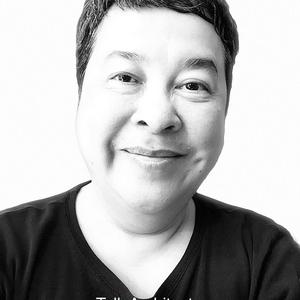
Descarga la app gratuita: radio.net
- Añadir radios y podcasts a favoritos
- Transmisión por Wi-Fi y Bluetooth
- Carplay & Android Auto compatible
- Muchas otras funciones de la app
Descarga la app gratuita: radio.net
- Añadir radios y podcasts a favoritos
- Transmisión por Wi-Fi y Bluetooth
- Carplay & Android Auto compatible
- Muchas otras funciones de la app


Talk Architecture
Escanea el código,
Descarga la app,
Escucha.
Descarga la app,
Escucha.
